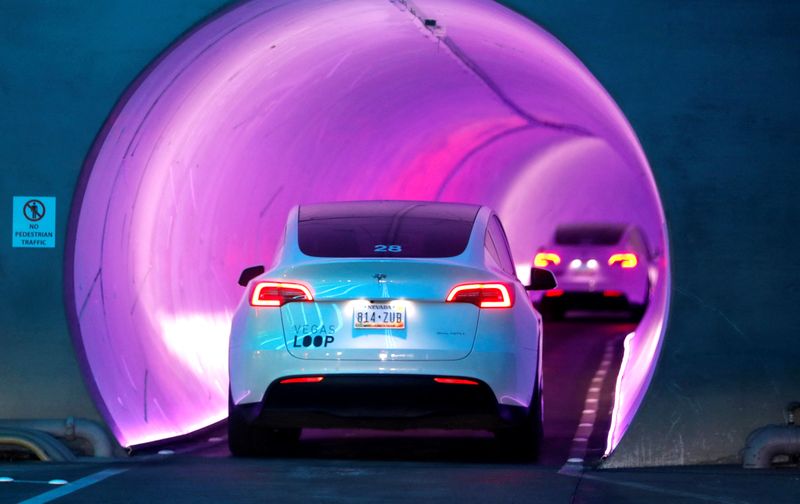By Mai Nguyen
HANOI (Reuters) -New electric vehicles from Tesla (NASDAQ:TSLA) and rivals are being engineered for efficiency in a way that cuts copper content, changes that could limit demand growth for the metal as the next-generation of EVs hits the road, industry analysts say.
The strong ramp-up in sales for EVs, led by growth in China, means copper demand will continue to grow for the remainder of the decade, but innovation in EVs has emerged as a limiting factor, according to two recent forecasts.
Copper has been seen as a green-energy transition play, in part because of the wiring needed for electric cars. EVs can use as much as 80 kgs (176 pounds) of copper, four times the amount used in a typical combustion engine vehicle.
In a report this week, Goldman Sachs (NYSE:GS) said EVs accounted for two-thirds of the global demand growth in copper last year.
But EV and battery makers have found ways to cut weight and costs that also mean less copper is needed per vehicle, Goldman Sachs and consultancy CRU Group said separately.
CRU Group lowered its estimate for copper usage in an average EV to 51-56 kgs between this year and 2030. That was down from its previous forecast of 65-66 kgs over the same period.
Goldman Sachs estimated copper in an average EV would fall to 65 kgs per vehicle by 2030 compared with an estimate of 73 kgs last year.
Both cited a chain of engineering changes intended to improve range, reduce weight and bolster efficiency of EVs that will have the cumulative effect of cutting copper content.
"It may be the first crack in the story on the demand side," CRU analyst Robert Edwards said. "Some of the projections out there have been very aggressive in terms of potential green energy demand (for copper)."
The engineering changes include shifting to more compact batteries where cells do not have to be wired into modules, using thinner copper foil in battery cells and shifting to higher voltage systems that will require less wiring.
In one example, Tesla expects that by moving to a 48-volt system for the secondary battery - the smaller battery used to power functions like lighting and wipers - in future EVs, it will be able to cut the need for copper to one quarter of current levels, Elon Musk told investors in May.
Goldman Sachs called innovation in batteries and the potential shift to higher voltage systems like Tesla's "the main threat to copper's EV demand leverage."
It expects copper demand for EVs to be 1 million metric tons this year and 2.8 million by 2030. Previously, it had projected 3.2 million metric tons of demand from EVs in 2030.
However, a higher penetration rate of EVs is making up for the easing copper usage in each unit.
CRU said it expected that EVs and plug-in hybrids would account for 42% of vehicles sold globally in 2030, up from a forecast of a third previously.

CRU's Edwards said some of those bullish on copper may have underestimated the potential for EV makers to roll out technologies that limit the use of the metal.
The benchmark three-month copper price on the London Metal Exchange leapt to a record $10,845 per metric ton in March 2022, partly thanks to the bullish EV demand story, but has fallen by nearly a quarter since.